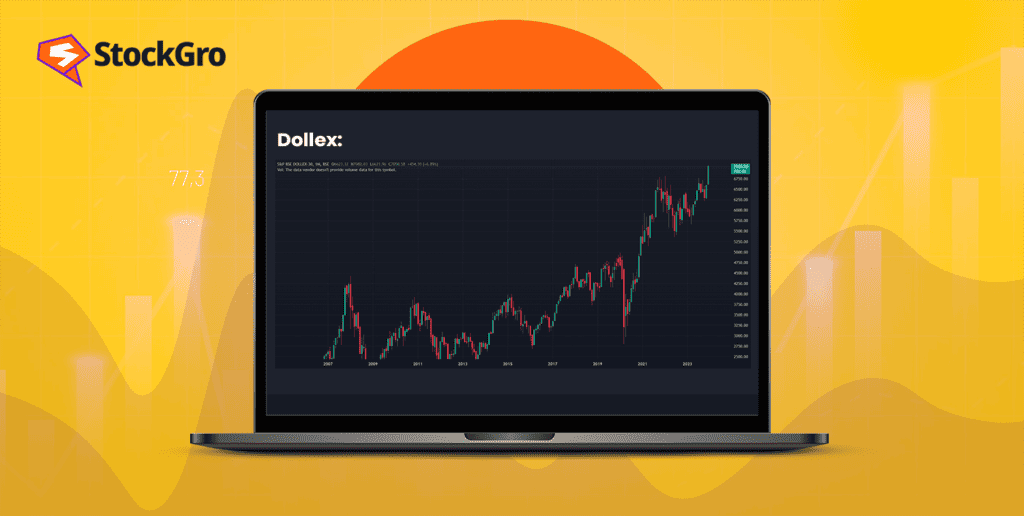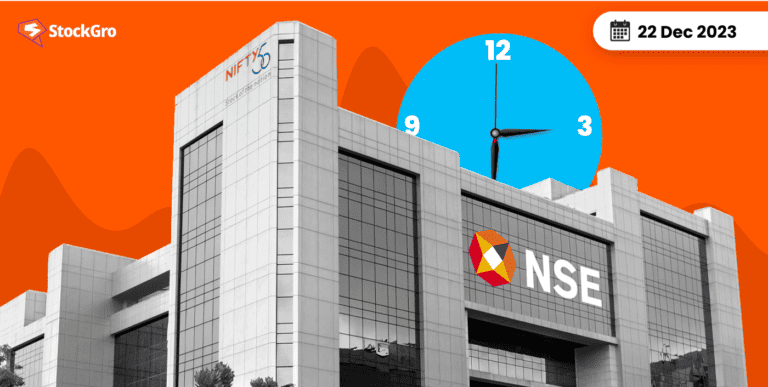
Indices in the stock market are collections of shares chosen according to specific standards, such as share size and trading volume. The equity market employs a sampling approach to depict the direction and movement of the market through an index. The two main indicators of the Indian equities markets are the CNX Nifty and the S&P BSE Sensex. You may be surprised to know that the Sensex and the Nifty have dollar-term equivalents.
The NSE Defty and Dollex-30 indices of the BSE are adjusted for changes in the rupee and dollar exchange rates. Both the components and the weightage of the equities in the indices stay the same. Let’s decode them one by one in this article.
You may also like: How to benchmark like a boss: Your guide to investment success!
Stock market index: What is it?
Indices are indicators of financial market volatility derived from statistics. The indices serve as performance metrics, showing how the market—overall or in a particular market segment—performs.
Selecting specific equities from comparable firms or those that satisfy predefined criteria results in forming a stock market index. The exchange already lists and trades these kinds of shares. Several selection criteria may be used to generate share market indices, including industry, sector, and market capitalisation.
Every stock index tracks the stock’s performance and the price changes of the stocks that make up the index. This indicates that any stock market index’s success is closely correlated with the performance of the individual stocks that comprise the index. In other words, when the stock values in an index rise, so does the index as a whole.
What is Dollex?
The BSE SENSEX, India’s most watched bellwether index, is represented in USD terms by the S&P BSE Dollex 30. The Sensex Index quoted in US dollars on the Bombay Stock Exchange is called Dollex-30. July 25, 2001, was the day when the BSE unveiled Dollex-30. With the exception of the Dollex indices, the market prices of the Indian rupee-denominated stocks that make up the other BSE indices have grown.
The Dollex index incorporates currency changes to depict Indian development in dollar terms in light of growing foreign direct investment (FDI) inflows and the fast integration of Indian equities markets with global capital markets. Stock prices and currency rates are subject to fluctuations, serving as global benchmarks for the Indian market.
Due to its incorporation of currency fluctuations, the S&P BSE Dollex 30 accurately represents dollar-adjusted returns. The S&P BSE Dollex 30 will yield lesser returns than the Sensex if the rupee weakens compared to the US currency. However, the gains on the S&P BSE Dollex 30 will be better than those on the Sensex if the rupee strengthens against the dollar.
Not only does the BSE’s Sensex have a dollar counterpart, but Dollex-100 and Dollex-200 are the dollar counterparts of the BSE 100 and BSE 200.
What is Sensex?
The name “Sensex” is derived from the words “sensitive” and “index.” The BSE manages the Indian benchmark index, which is known as the Sensex. The Sensex, a measure of India’s economy, consists of 30 of the BSE’s biggest and most frequently traded equities. Both market capitalisation and float adjustments are applied to it.
It has expanded quickly since it opened in the 1990s. This growth trajectory is the result of the substantial increase in India’s GDP since the year 2000.
Also read: Difference between Nifty and Sensex
What is Defty? Relationship between Dollex and Defty
The NSE Defty is the NSE Nifty’s equivalent in US dollars, just like the Dollex is the Sensex’s equivalent in US dollars. Consequently, any changes to the rupee/dollar exchange rate are reflected in the NSE Defty relative to the Nifty. Both the Dollex-30 and the Defty are measured in US dollars. The base year for the Dollex-30 is 1978–1979, while the base date for the Defty is November 3, 1995.
The Dollex-30 index from BSE Ltd. and the Defty index from the National Stock Exchange are indices calibrated to account for dollar and rupee exchange rate fluctuations. Both the components and the weightage of the equities in the indices stay the same. The exchanges created these indices to give offshore funds and foreign institutional investors (FIIs) a baseline for gauging the return on their stock investments in US dollars.
Shareholders who have used dollars to invest in Indian shares will find greater value in indices like Dollex and Defty. In addition to FIIs, non-resident Indians use dollars to purchase stocks in India. The results from these indices will differ from the rupee-term indices since they account for currency movements.
Dollex vs. Sensex: What’s the difference?
The goal of the S&P BSE Dollex 30 is to evaluate the fiscal health of the 30 biggest, most liquid, and soundest financial corporations listed at BSE Ltd. in important sectors of the Indian economy. The Dollex is a dollar index, in contrast to the Sensex, which is an index of rupees. That is the sole distinction.
The S&P BSE Dollex 30 index was regularly modified to account for changes in the rupee and dollar exchange rates. Typically, such variations in the value of the rupee are measured using the RBI reference rate. This illustrates the general impact of fluctuations in the rupee against the dollar.
Every other requirement for the Dollex, including the 1978–1979 base year, is the same as it was for the original Sensex. In both the Sensex and the Dollex, the weights of the thirty stocks and the adjustments occur simultaneously. The Sensex is denominated in rupees, whereas the S&P BSE Dollex 30 is denominated in dollars. That is the sole distinction. In the BSE language Dollex is also categorised as a strategy index.
Also read: Nifty 2023: What have you in store?
Conclusion
When markets are volatile, stock market indices serve as a safety net for conservative investors. The Dollex and the Sensex are two important indices that help investors understand the movements of the Indian market. However, they also have some limitations, such as volatility, currency fluctuations, and market manipulation. Therefore, it is a good idea to be well-informed before making any decisions based on these indices.

